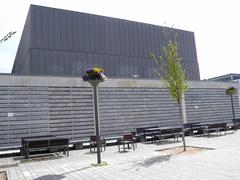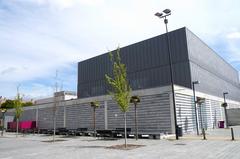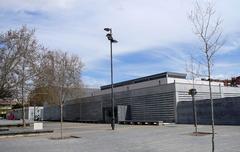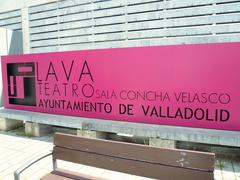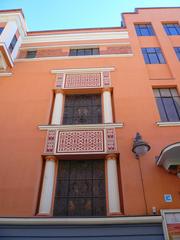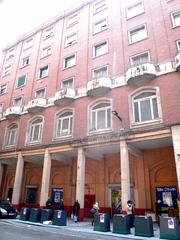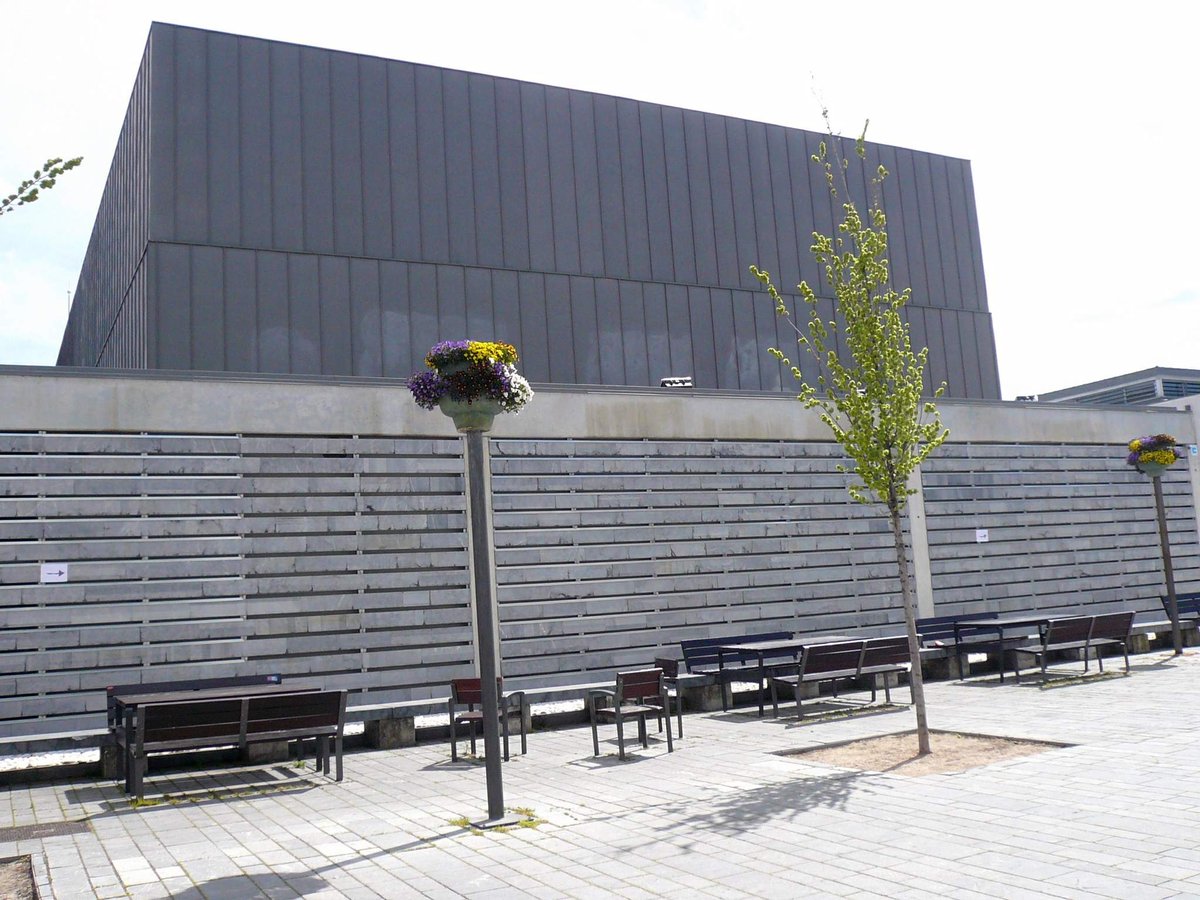
Laboratorio De Las Artes De Valladolid (LAVA): Visiting Hours, Tickets, and Comprehensive Guide
Date: 03/07/2025
Introduction
The Laboratorio de las Artes de Valladolid (LAVA) is a premier cultural landmark in Valladolid, Spain, celebrated for its seamless fusion of historical architecture and cutting-edge artistic innovation. Housed in a carefully restored early 20th-century municipal slaughterhouse, LAVA has evolved into a multidisciplinary arts center hosting theater, dance, music, visual arts, and experimental performances. This guide provides detailed information on LAVA’s history, architectural transformation, visitor experience, ticketing, and nearby attractions—making it an essential resource for anyone planning to explore Valladolid’s thriving cultural scene (Ocio Valladolid, Top Valladolid, Disfrutalia).
Table of Contents
- Historical Background and Architectural Transformation
- Cultural Significance and Urban Impact
- Artistic Residencies and Programming
- Visiting Hours and Ticket Information
- Visitor Experience and Practical Information
- Nearby Attractions and Accommodation
- Frequently Asked Questions (FAQ)
- Visuals and Interactive Elements
- Conclusion and Call to Action
- References
Historical Background and Architectural Transformation
Origins and Historical Context
LAVA’s site originally functioned as Valladolid’s municipal slaughterhouse, constructed between 1926 and 1936. As the city’s economy shifted from industry to services and culture, the unused complex became an ideal candidate for revitalization. The city council’s vision was to create a space that would honor Valladolid’s industrial past while fostering contemporary artistic expression (Grijalba Arquitectos).
Architectural Transformation
The transformation was steered by a philosophy of adaptive reuse and sustainability. A national competition led to the selection of an architectural team that preserved key industrial elements—such as the concrete lattice façade and original brickwork—while introducing modern materials and open-plan interiors. The result is a visually striking, multifunctional venue that bridges Valladolid’s heritage and its forward-looking cultural ambitions.
Key features include:
- Façade and Exterior: Large glass panes provide transparency and invite public engagement, while preserved bricks and steel structures evoke the site’s history.
- Interior Spaces: The main auditorium, Sala Concha Velasco, seats 610 and boasts state-of-the-art acoustics and lighting. Flexible black box and white cube rooms, exhibition halls, rehearsal studios, and courtyards support a wide range of artistic activities.
- Sustainability: Energy-efficient systems and environmental measures minimize the venue’s ecological footprint.
Cultural Significance and Urban Impact
Since its opening in the early 2010s, LAVA has become a catalyst for Valladolid’s urban regeneration. It attracts local, national, and international artists and audiences, driving cultural tourism and economic development in its neighborhood. Major festivals—such as Lava Live Festival and the Festival Internacional de Teatro y Artes de Calle—draw thousands of visitors each year (Concert Archives, Gazette Life).
LAVA’s programming is intentionally eclectic, encompassing theater, dance, music, visual arts, and interdisciplinary projects. Its commitment to accessibility and community engagement is reflected in open-plan spaces, transparent design, and a range of educational programs and outreach initiatives (Sapos y Princesas).
Artistic Residencies and Programming
Artistic Residencies
LAVA’s “Espacios Habitados” program provides residencies for both research and creation. These competitive residencies are open to professional artists, giving them access to rehearsal spaces, technical support, and funding. Projects often culminate in public showings, ensuring a dynamic connection between creation and audience (Ayuntamiento de Valladolid).
Year-Round Programming
LAVA’s 2024/2025 season includes 42 performances by 41 companies from Spain and abroad, featuring a blend of contemporary theater, dance, music, and circus arts (Diario de Valladolid). Seasonal highlights include:
- Theater: Contemporary reinterpretations of classics and innovative original works.
- Dance and Circus: Modern dance, flamenco, and avant-garde circus.
- Music: Jazz (ValladolidJazz), flamenco (Jornadas Flamencas), pop, rock, and indie concerts (Tomaticket).
- Family and Educational Programs: Workshops and performances for children and teens.
- Festivals: Hosting key events, including the Festival Internacional de Teatro y Artes de Calle (TACVA).
Visiting Hours and Ticket Information
Opening Hours
- Tuesday to Saturday: 12:00–14:00 and 18:00–20:30, or until event start.
- Sundays and holidays: Open only on event days, two hours before performance.
Ticketing
- Box Office: Located at the main entrance, open during visiting hours.
- Online Sales: LAVA Valladolid Tickets, Taquilla.com, Tomaticket.
- Pricing: Generally €8–€20, with discounts for students, seniors, groups, and unemployed individuals. Special events may have different pricing structures.
- Entry: Doors open 30–60 minutes before events. Latecomers may be admitted at staff discretion.
Visitor Experience and Practical Information
Location and Transport
LAVA is centrally located at Paseo de Zorrilla, 101, a short walk from Valladolid’s main historical sites and accessible by several bus lines (1, 2, 5, 16, 18, 19, H, C1). Valladolid’s central train station (Campo Grande) is 2 km away (LAVA official site).
Facilities and Accessibility
- Main Spaces: Sala Concha Velasco (610-seat auditorium), Sala Blanca, Sala Negra, Sala 221, ExpoLAVA, and landscaped courtyards.
- On-site Amenities: Café-restaurant, bookstore, cloakroom, Wi-Fi, and information desk.
- Accessibility: Ramps, elevators, adapted restrooms, and reserved seating for people with reduced mobility (ARTEINFORMADO).
Visitor Tips
- Advance Booking: Highly recommended for popular performances.
- Language: Most events are in Spanish; some international works feature surtitles.
- Dress Code: Smart casual is typical.
- Photography: Prohibited during performances unless specified.
Nearby Attractions and Accommodation
LAVA’s central location makes it an excellent starting point for exploring Valladolid:
- Campo Grande Park: The city’s largest green space.
- Plaza Mayor: Historic main square, full of cafes and shops.
- National Sculpture Museum: Renowned collection of Spanish sculpture.
- Valladolid Cathedral: Architectural and historical landmark.
A range of hotels, apartments, and hostels are available nearby (Booking.com, Hotels.com).
Frequently Asked Questions (FAQ)
Q: What are LAVA’s visiting hours?
A: Tuesday to Saturday, 12:00–14:00 & 18:00–20:30; Sundays/holidays, open only on event days, two hours before the show.
Q: How do I buy tickets?
A: Via the box office, LAVA official website, or authorized platforms.
Q: Is LAVA accessible?
A: Yes. Ramps, elevators, and adapted restrooms are available.
Q: Are there family-friendly events?
A: Yes. LAVA offers programming and workshops for children and youth.
Q: What else can I visit nearby?
A: Campo Grande Park, Plaza Mayor, National Sculpture Museum, and Valladolid Cathedral.
Visuals and Interactive Elements
Explore LAVA’s spaces and nearby attractions via the interactive map and photo gallery on the official website. Look for images with captions such as “LAVA Valladolid exterior cultural center” and “Sala Concha Velasco auditorium at LAVA Valladolid.”
Conclusion and Call to Action
The Laboratorio de las Artes de Valladolid (LAVA) stands as a beacon of cultural innovation and urban regeneration. Its blend of historical architecture, contemporary programming, and community focus creates a unique destination for all lovers of the arts. Plan your visit by checking event schedules, securing tickets online, and exploring nearby attractions for a comprehensive Valladolid experience.
Stay connected with LAVA’s latest updates by following their official website and social media channels, and consider downloading the Audiala app for exclusive content and event alerts.
References
- Ocio Valladolid
- Top Valladolid
- Disfrutalia
- Ayuntamiento de Valladolid
- LAVA Valladolid Tickets
- Diario de Valladolid
- Grijalba Arquitectos
- Concert Archives
- Gazette Life
- ARTEINFORMADO
- Jackson Live
- Tomaticket
- TACVA
- Sapos y Princesas
- Cultura Valladolid
- Booking.com
- Hotels.com
- Spain.info
